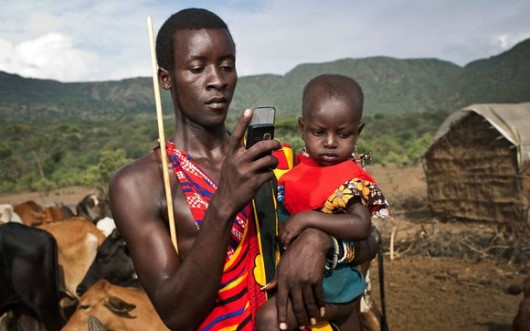Languages of the Last Mile
What Will Six Billion Non-English Speakers Do?
 Photo: oxfamblogs.com
Photo: oxfamblogs.com
So how fast will IP traffic grow? And how fast will it be subject to CDNs and localization of content, particularly in less developed regions like Africa? The short answer is that Internet users are less common in Africa than elsewhere. So we assume that the region’s Internet demand will grow faster than anywhere else in the next few years. This may be—unless there are factors that will keep the region from growing as fast as other regions have.
Our analysis indicates language barriers are one such factor. Africa’s 2000 indigenous languages, many of them oral, are not represented on the Internet. Even Arabic, spoken in various dialects by more than 150 million Africans (mostly in the north), is only used on half of one percent of the world’s websites. Otherwise no African language has a presence on even 0.1% of websites (the level occupied by Estonian and, surprisingly, Hindi). In part this is due to the diversified language profiles involved. In Kenya, for example, less than 2% of the population speaks English as a first language and even fewer Kiswahili, as Kikuyu, Dholuo and other ethnic languages fill the mother tongue role.
The Internet, meanwhile, has its own language profile. Half of the world’s websites are written in English and another 30% in the next seven languages, all of them European but for Japanese. There are a billion or so native speakers of these languages, a number that no more than doubles when second- and third-language speakers are included. And it takes a certain level of writing proficiency, however minimal, to be able to interact with a search or social media site, further limiting the number of Internet users. So beyond downloading of music and some videos, Internet use in regions with off-web languages may not increase as fast as suppliers of smartphones and rural WiFi think.
Language skills are key in other words, as is content in local languages. For example, looking at 11 low-income African countries with substantial English-speaking populations, we found the average Internet user level to be 22%. By comparison, 14 French-speaking countries, average 13% using the Internet. Presumably, the much smaller share of websites written in French (4%) is a factor here. Other-language countries have even lower levels of Internet users. Correspondingly, English-speaking countries well ahead in IP addresses per 100 Internet users at 15%, compared to 8% in the French-speaking ones.
Overall then, African Internet usage may not grow as fast in the next few years as is often expected. Similarly, the growth of CDNs and other forms of localization in Africa may not benefit from the scale factors that most Asian markets have been able to count on. Content accumulation nodes are already being deployed in Egypt, Kenya, Nigeria and South Africa, reducing their long-route IP traffic needs. Over time these facilities will serve neighboring countries, reducing their reliance on long-route capacity as well. Still, this will take longer than those who think everyone will soon be on the web assume.
 View Printer Friendly Version
View Printer Friendly Version